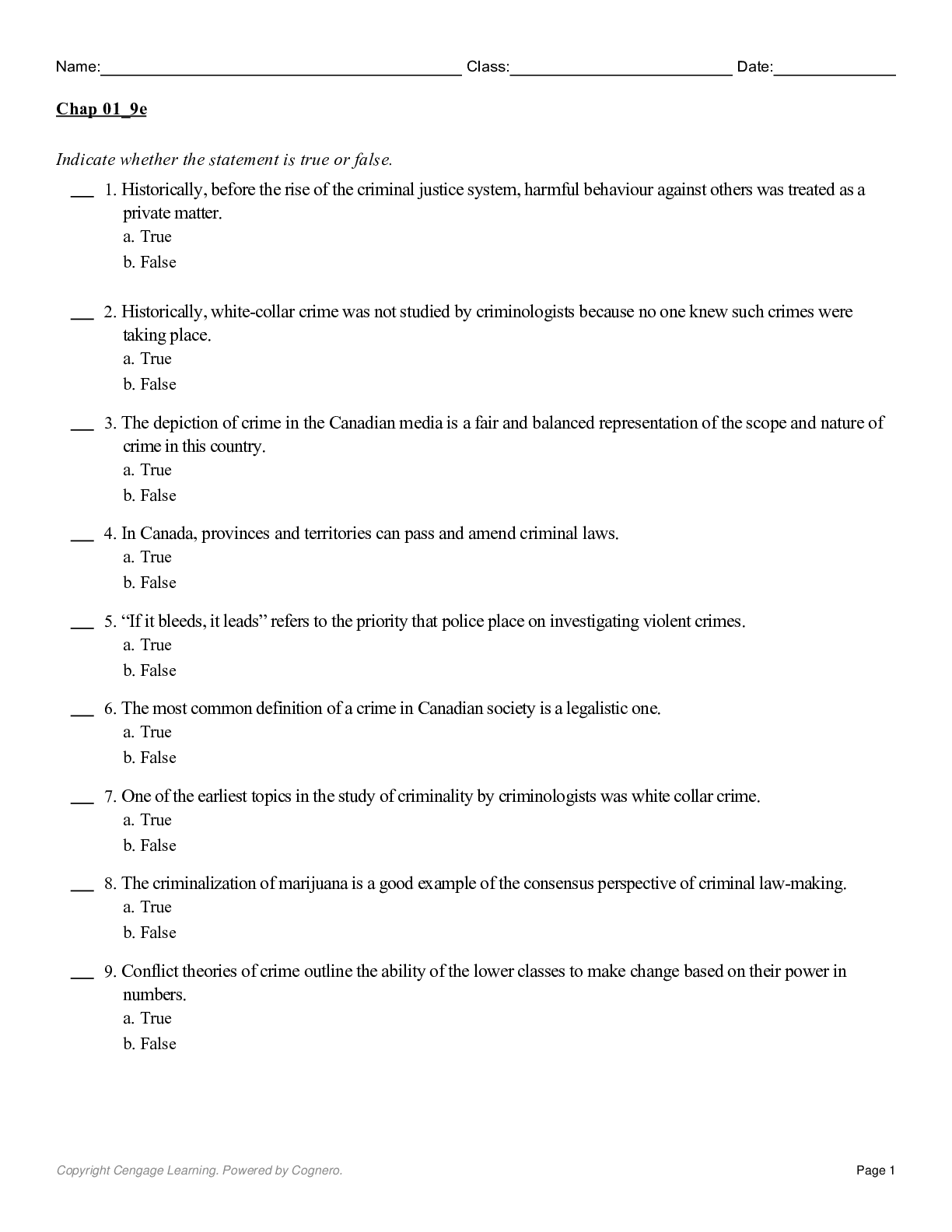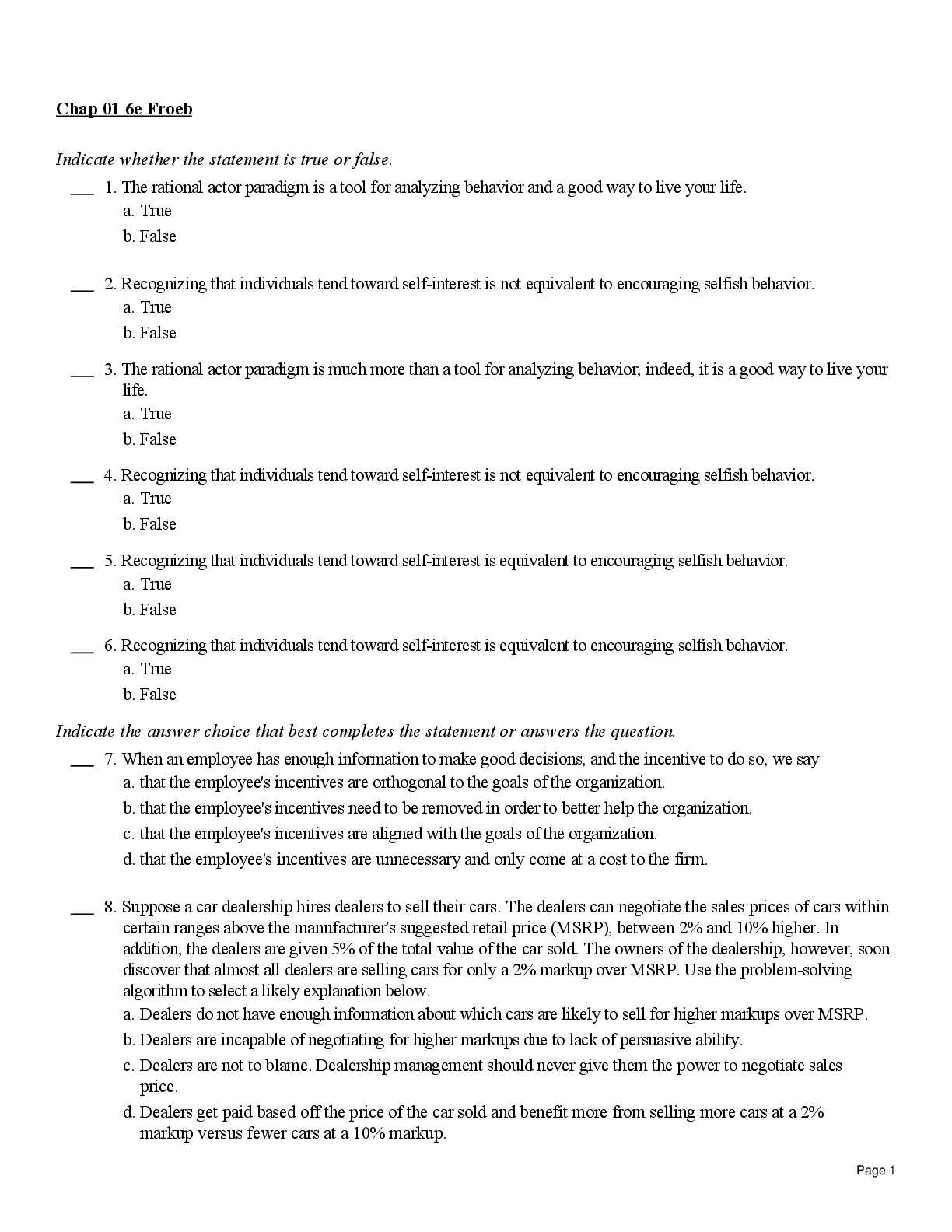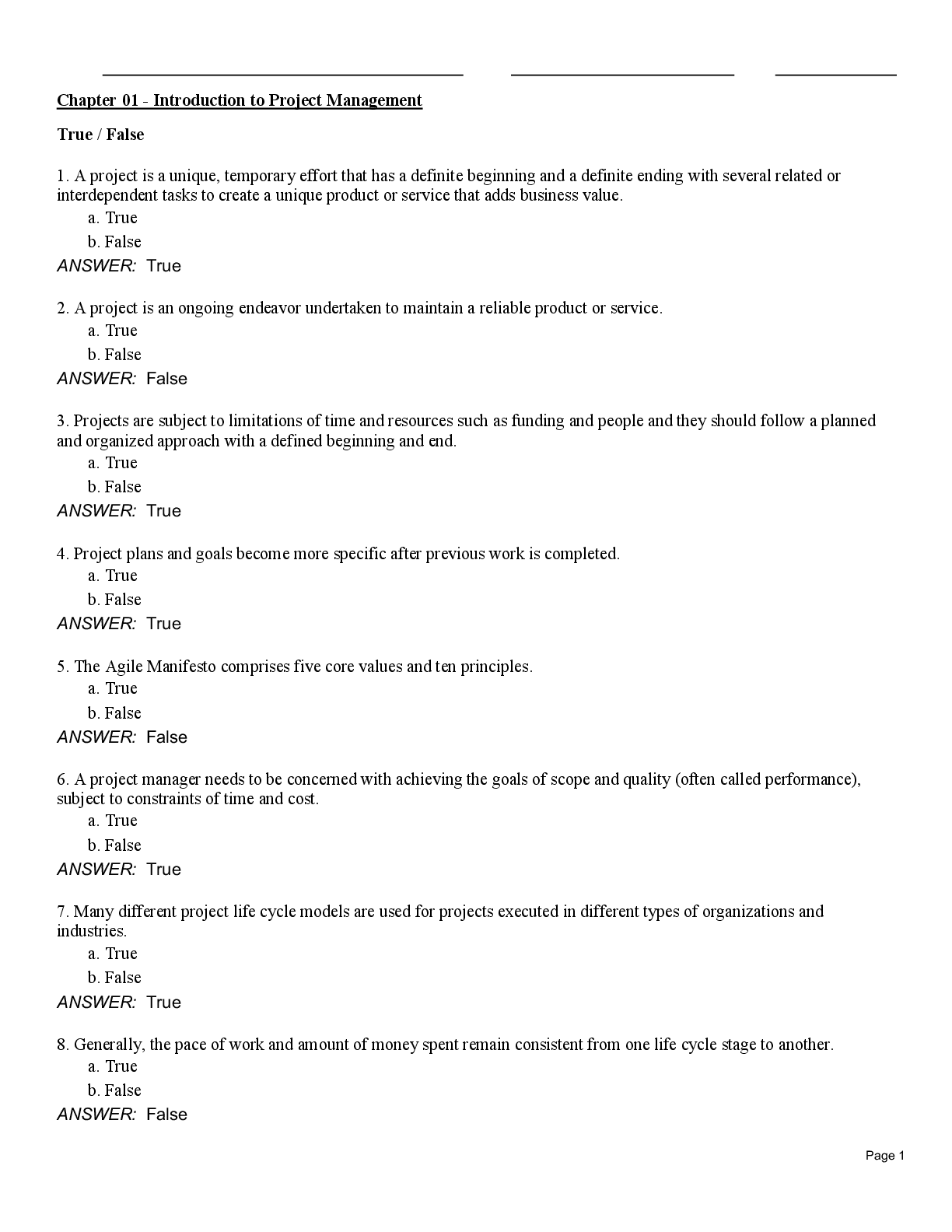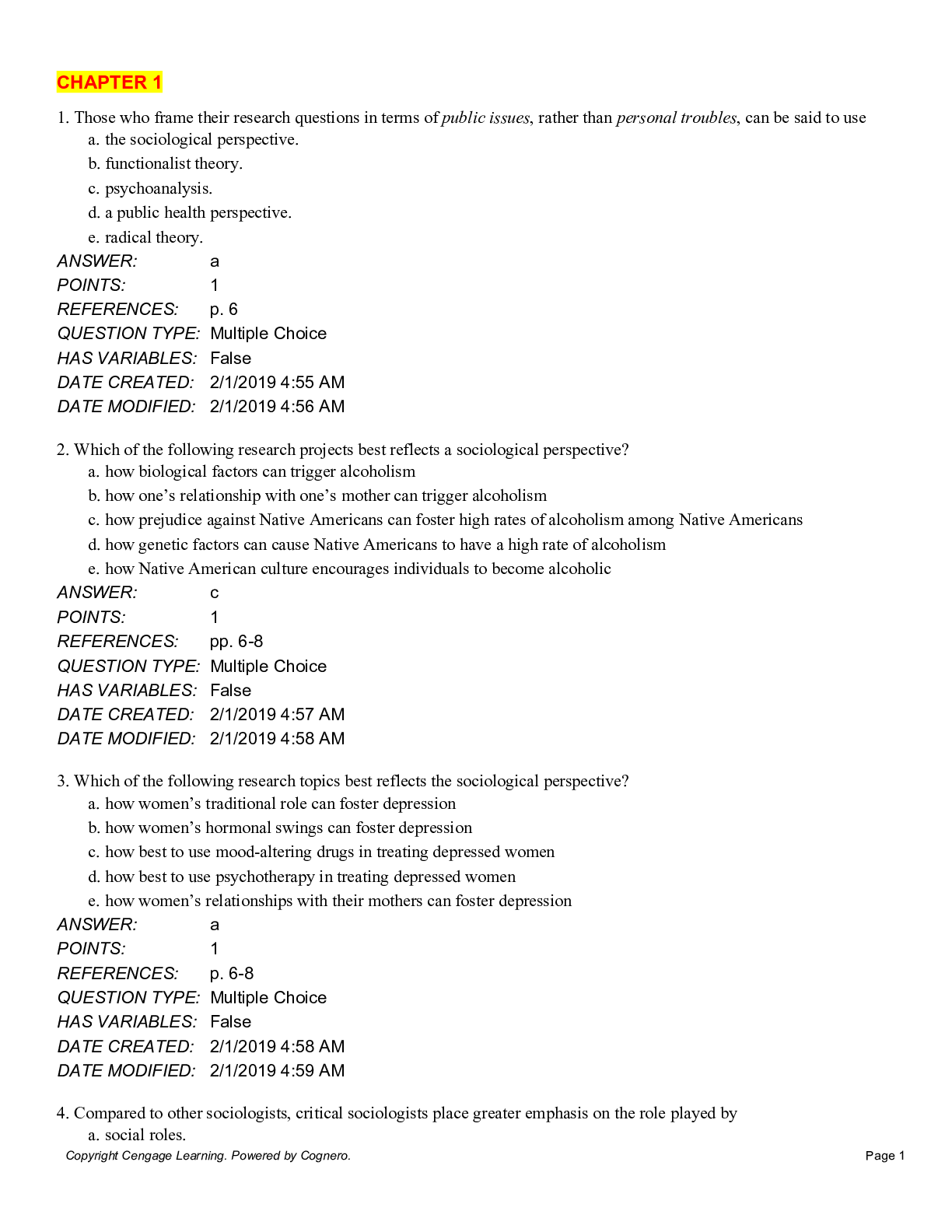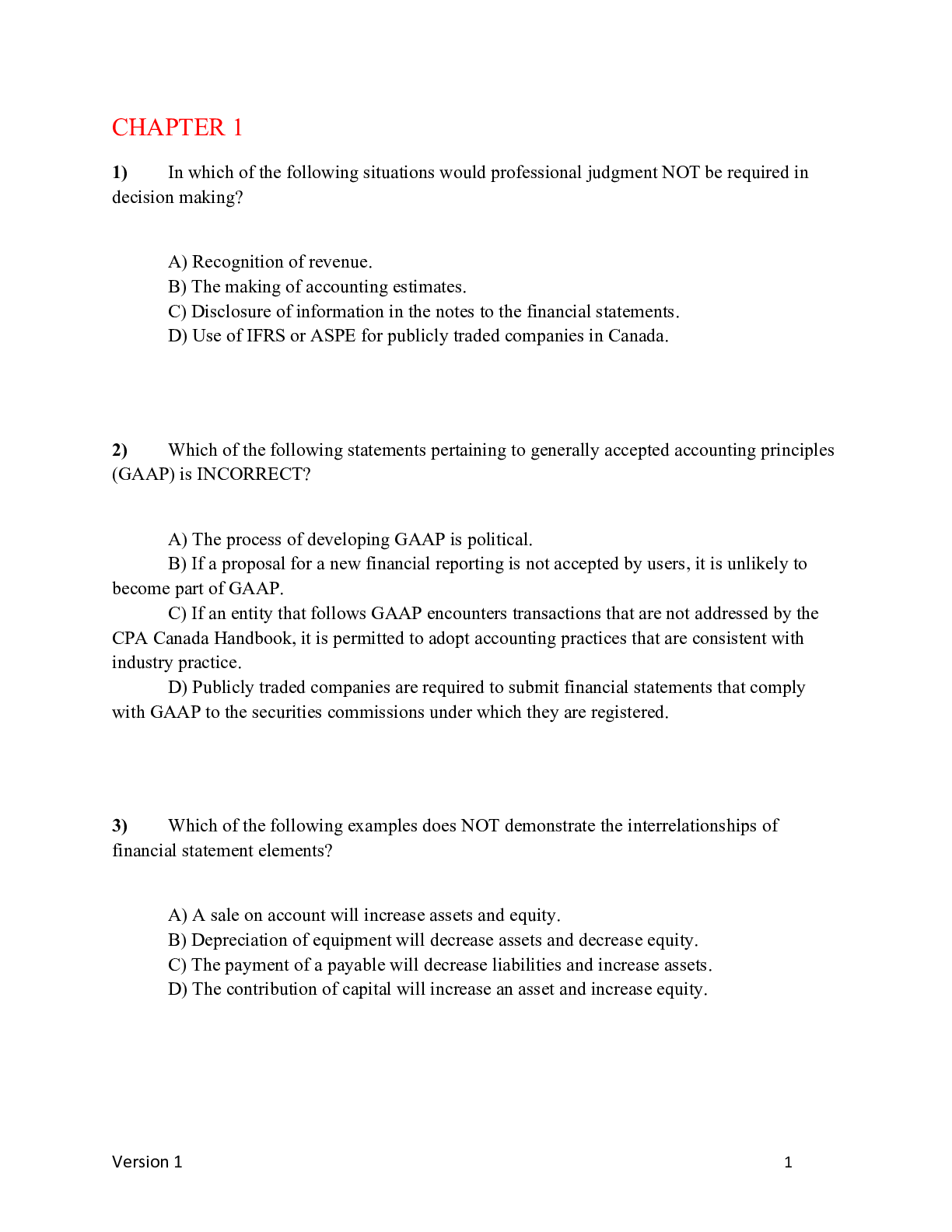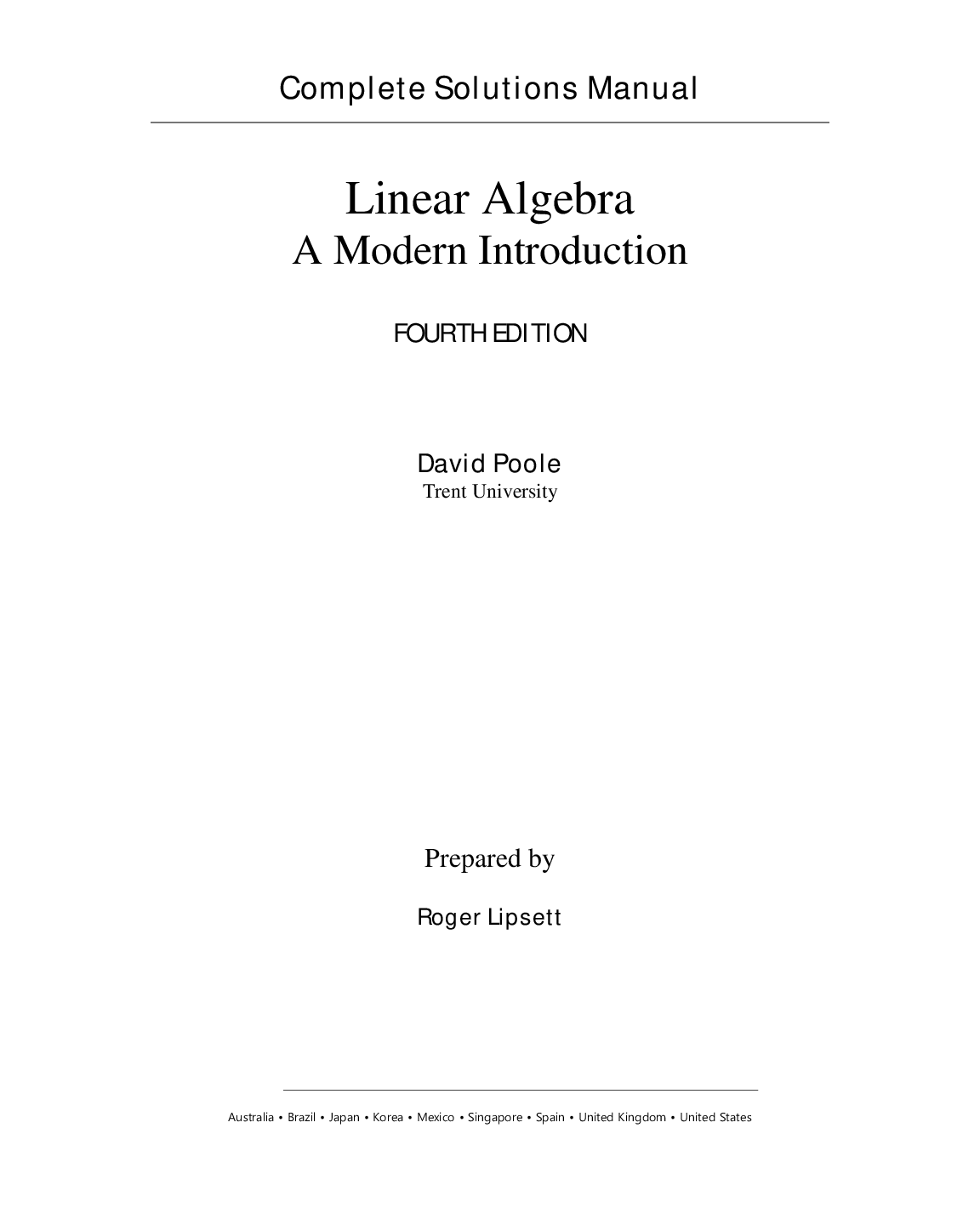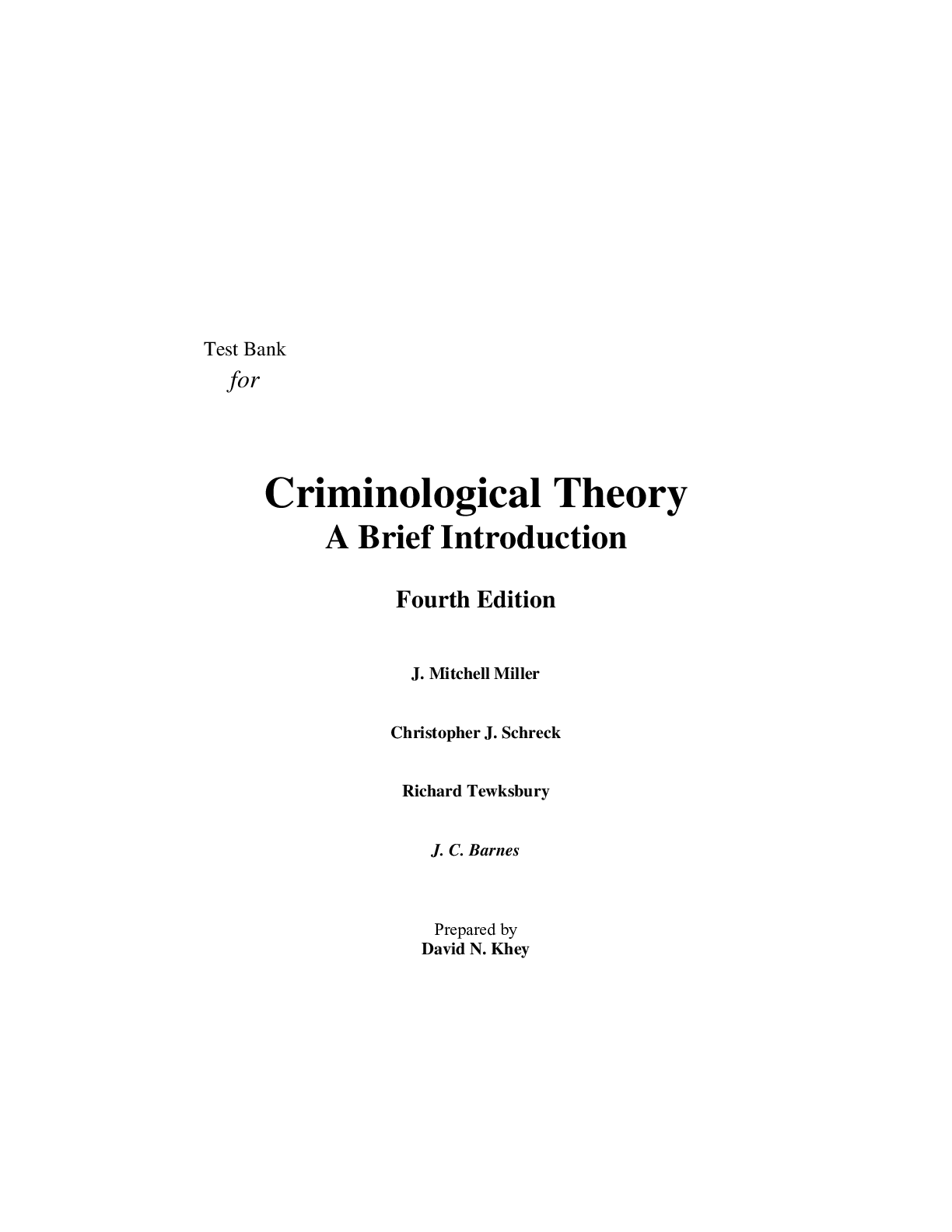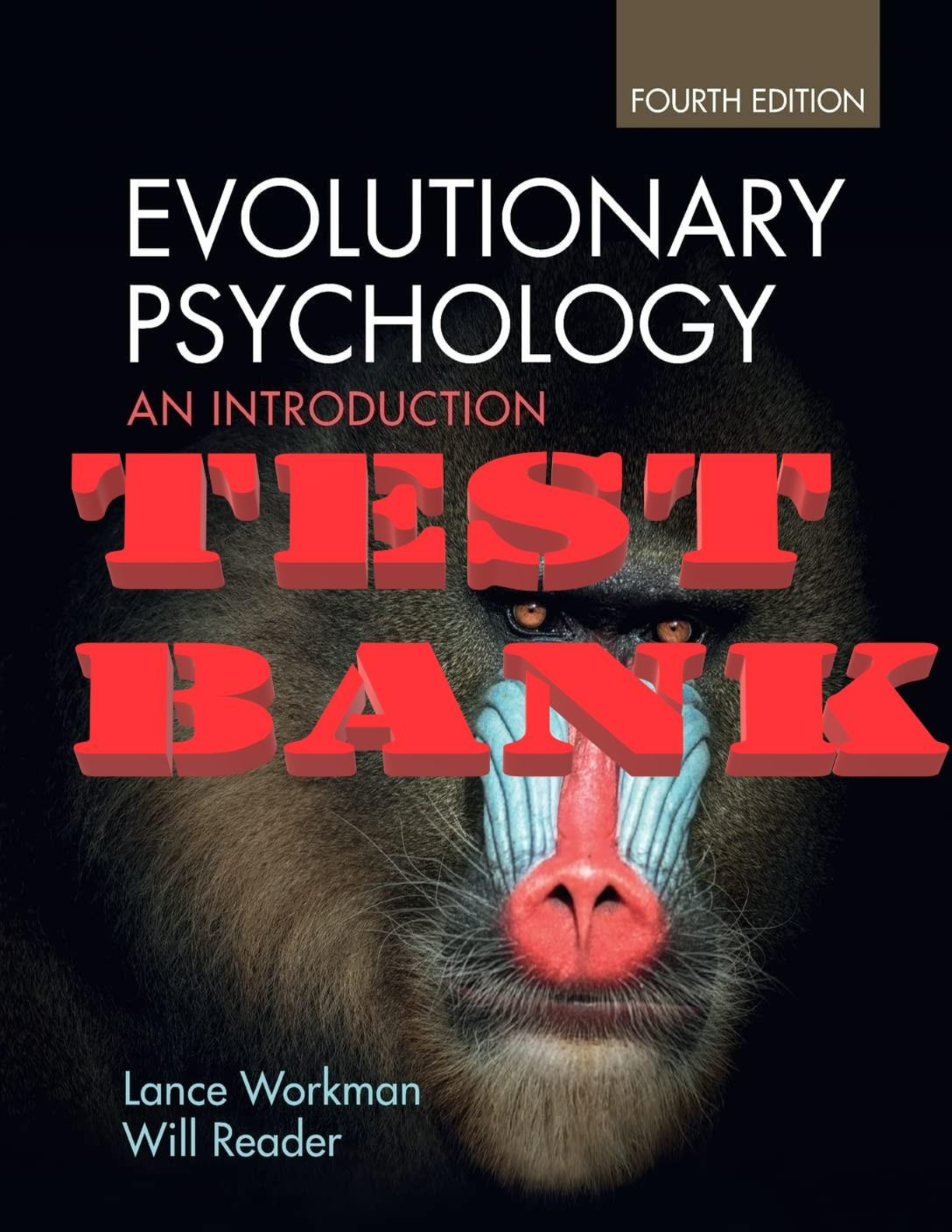Psychology > TEST BANKS > Psychometrics: An Introduction 4th Edition by Michael Furr TEST BANK (All)
Psychometrics: An Introduction 4th Edition by Michael Furr TEST BANK
Document Content and Description Below
Test Bank for Psychometrics, 4th Edition, 4e by R. Michael Furr TEST BANK ISBN-13: 9781071824078 Full chapters included Chapter 1 • Psychometrics and the Importance of Psychological Measureme... nt Why Psychological Testing Matters to You Observable Behavior and Unobservable Psychological Attributes Psychological Tests: Definition and Types What Is a Psychological Test? Types of Tests What Is Psychometrics? Psychometrics A Brief History of Psychometrics Challenges to Measurement in Psychology The Importance of Individual Differences But Psychometrics Goes Well Beyond “Differential” Psychology Suggested Readings PART I • BASIC CONCEPTS IN MEASUREMENT Chapter 2 • Scaling Fundamental Issues With Numbers The Property of Identity The Property of Order The Property of Quantity The Number 0 Units of Measurement Additivity and Counting Additivity Counts: When Do They Qualify as Measurement? Four Scales of Measurement Nominal Scales Ordinal Scales Interval Scales Ratio Scales Scales of Measurement: Practical Implications Additional Issues Regarding Scales of Measurement Technical Appendix: R Syntax Summary Suggested Readings Chapter 3 • Differences, Consistency, and the Meaning of Test Scores The Nature of Variability Importance of Individual Differences Variability and Distributions of Scores Central Tendency Variability Distribution Shapes and Normal Distributions Quantifying the Association or Consistency Between Distributions Interpreting the Association Between Two Variables Scatterplots: Visually Representing the Association Between Two Variables Covariance Correlation Variance and Covariance for “Composite Variables” Binary Items Interpreting Test Scores Needed: An Interpretive Frame of Reference z Scores (Standard Scores) Converted Standard Scores (Standardized Scores) Percentile Ranks Normalized Scores Test Norms Representativeness of the Reference Sample Technical Appendix: R Syntax Summary Suggested Readings Chapter 4 • Test Dimensionality and Factor Analysis Test Dimensionality Three Dimensionality Questions: What They Are and Why They Matter Unidimensional Tests Multidimensional Tests With Correlated Dimensions (Tests With Higher-Order Factors) Multidimensional Tests With Uncorrelated Dimensions The Psychological Meaning of Test Dimensions Factor Analysis: Examining the Dimensionality of a Test The Logic and Purpose of Exploratory Factor Analysis: A Conceptual Overview Conducting and Interpreting an Exploratory Factor Analysis A Deeper Perspective on Factors, Factor Loadings, and Rotation Factor Analysis of Binary Items A Quick Look at Confirmatory Factor Analysis Technical Appendix: R Syntax Summary Suggested Readings PART II • RELIABILITY Chapter 5 • Reliability: Conceptual Basis Overview of Reliability and Classical Test Theory Observed Scores, True Scores, and Measurement Error Variances in Observed Scores, True Scores, and Error Scores Four Ways to Think of Reliability Reliability as the Ratio of True Score Variance to Observed Score Variance Reliability as Lack of Error Variance Reliability as the (Squared) Correlation Between Observed Scores and True Scores Reliability as the Lack of (Squared) Correlation Between Observed Scores and Error Scores Reliability and the Standard Error of Measurement From Theory to Practice: Measurement Models and Their Implications for Estimating Reliability Overview of Key Assumptions Parallel Tests Tau-Equivalent and Essentially Tau-Equivalent Tests Congeneric Tests Tests With Correlated Errors Summary Domain Sampling Theory Summary Suggested Readings Chapter 6 • Empirical Estimates of Reliability Alternate Forms Method of Estimating Reliability Test–Retest Method of Estimating Reliability Internal Consistency Method of Estimating Reliability Split-Half Estimates of Reliability “Raw” Coefficient Alpha “Standardized” Coefficient Alpha Raw Alpha for Binary Items: KR20 Omega On the Assumptions Underlying Alpha and Omega, the Relative Applicability of Those Indices, and Their Limitations Internal Consistency Versus Dimensionality Factors Affecting the Reliability of Test Scores Sample Heterogeneity and Reliability Generalization Reliability of Difference Scores Defining Difference Scores Estimating the Reliability of Difference Scores Factors Affecting the Reliability of Difference Scores The Problem of Unequal Variability Difference Scores: Summary and Caution Technical Appendix: R Syntax Summary Suggested Readings Note Chapter 7 • The Importance of Reliability Applied Behavioral Practice: Evaluation of an Individual’s Test Score Point Estimates of True Scores Confidence Intervals Debate and Alternatives Summary Behavioral Research Reliability, True Associations, and Observed Associations Measurement Error (Low Reliability) Attenuates the Observed Associations Between Measures Reliability, Effect Sizes, and Statistical Significance Implications for Conducting and Interpreting Behavioral Research Summary Test Construction and Refinement Item Discrimination and Other Information Regarding Internal Consistency Item Difficulty (Mean) and Item Variance Technical Appendix: R Syntax Summary Suggested Readings PART III • VALIDITY Chapter 8 • Validity: Conceptual Basis What Is Validity? The Importance of Validity Validity Evidence: Test Content Expert Rating Evidence Threats to Content Validity Content Validity Versus Face Validity Validity Evidence: Internal Structure of the Test Factor-Analytic Evidence Validity Evidence: Response Processes Direct Evidence Indirect Evidence Validity Evidence: Associations With Other Variables Convergent Evidence Discriminant Evidence Criterion, Concurrent, and Predictive Evidence Validity Evidence: Consequences of Testing Evidence of Intended Effects Evidence Regarding Unintended Differential Impact on Groups Evidence Regarding Unintended Systemic Effects Other Perspectives on Validity Contrasting Reliability and Validity Summary Suggested Readings Chapter 9 • Estimating and Evaluating Convergent and Discriminant Validity Evidence A Construct’s Nomological Network Methods for Evaluating Convergent and Discriminant Validity Focused Associations Sets of Correlations Multitrait–Multimethod Matrices Quantifying Construct Validity Factors Affecting a Validity Coefficient Associations Between Constructs Random Measurement Error and Reliability Restricted Range Skew and Relative Proportions Method Variance Time Predictions of Single Events Interpreting a Validity Coefficient Squared Correlations and “Variance Explained” Estimating Practical Effects: Binomial Effect Size Display, Taylor-Russell Tables, Utility Analysis, and Sensitivity/Specificity Guidelines or Norms for a Field Statistical Significance Technical Appendix: R Syntax Summary Suggested Readings Notes PART IV • THREATS TO PSYCHOMETRIC QUALITY Chapter 10 • Response Biases Types of Response Biases Acquiescence Bias (“Yea-Saying and Nay-Saying”) Extreme and Moderate Responding Social Desirability (“Faking Good”) Malingering (“Faking Bad”) Careless or Random Responding Guessing Methods for Coping With Response Biases Minimizing the Existence of Bias by Managing the Testing Context Minimizing the Existence of Bias by Managing Test Content Minimizing the Effects of Bias by Managing Test Content or Scoring Managing Test Content to Detect Bias and Intervene Using Specialized Tests to Detect Bias and Intervene Response Biases, Response Sets, and Response Styles Summary Suggested Readings Chapter 11 • Test Bias Why Worry About Test Score Bias? Detecting Construct Bias: Internal Evaluation of a Test Reliability Rank Order Item Discrimination Index Factor Analysis Differential Item Functioning Analyses Summary Detecting Predictive Bias: External Evaluation of a Test Basics of Regression Analysis One Size Fits All: The Common Regression Equation Intercept Bias Slope Bias Intercept and Slope Bias Criterion Score Bias The Effect of Reliability Other Statistical Procedures Test Fairness Example: Is the SAT Biased in Terms of Race or Socioeconomic Status? Race/Ethnicity Socioeconomic Status Technical Appendix: R Syntax Summary Suggested Readings Notes PART V • ADVANCED PSYCHOMETRIC APPROACHES Chapter 12 • Confirmatory Factor Analysis On the Use of EFA and CFA The Frequency and Roles of EFA and CFA Using CFA to Evaluate Measurement Models The Process of CFA for Analysis of a Scale’s Internal Structure Overview of CFA and an Example Preliminary Steps Step 1: Specification of the Measurement Model Step 2: Computations Step 3: Interpreting and Reporting Output Step 4: Model Modification and Reanalysis (If Necessary) Comparing Models Summary CFA and Reliability Evaluating Types of Classical Test Theory Measurement Models Estimating Reliability (Omega Index) CFA and Validity CFA and Measurement Invariance The Meaning of Measurement Invariance Levels of Invariance: Meaning and Detection Technical Appendix: R Syntax Summary Suggested Readings Chapter 13 • Generalizability Theory Multiple Facets of Measurement Generalizability, Universes, and Variance Components G Studies and D Studies Conducting and Interpreting Generalizability Theory Analysis: A One-Facet Design Phase 1: G Study Phase 2: D Study Conducting and Interpreting Generalizability Theory Analysis: A Two-Facet Design Phase 1: G Study Phase 2: D Study Other Measurement Designs Number of Facets Random Versus Fixed Facets Crossed Versus Nested Designs Relative Versus Absolute Decisions A Practical, Consistency-Oriented Interpretation of Variance Components Systematic Variance Components Reflect “Consistent Variance” Residual/Error Variance Component Reflects Inconsistent Variance Generalizability Coefficients as the Proportion of Variance That Is Consistent More Complex Designs Technical Appendix: R Syntax Summary Suggested Readings Notes Chapter 14 • Item Response Theory and Rasch Models Factors Affecting Responses to Test Items Respondent Trait Level as a Determinant of Item Responses Item Difficulty as a Determinant of Item Responses Item Discrimination as a Determinant of Item Responses Guessing IRT Measurement Models One-Parameter Logistic Model (or Rasch Model) Two-Parameter Logistic Model Three-Parameter Logistic Model Graded Response Model Obtaining Parameter Estimates: A 1PL Example Model Fit Item and Test Information [Show More]
Last updated: 2 months ago
Preview 10 out of 182 pages

Loading document previews ...
Buy this document to get the full access instantly
Instant Download Access after purchase
Buy NowInstant download
We Accept:

Reviews( 0 )
$26.00
Can't find what you want? Try our AI powered Search
Document information
Connected school, study & course
About the document
Uploaded On
Sep 19, 2022
Number of pages
182
Written in
Additional information
This document has been written for:
Uploaded
Sep 19, 2022
Downloads
0
Views
155

